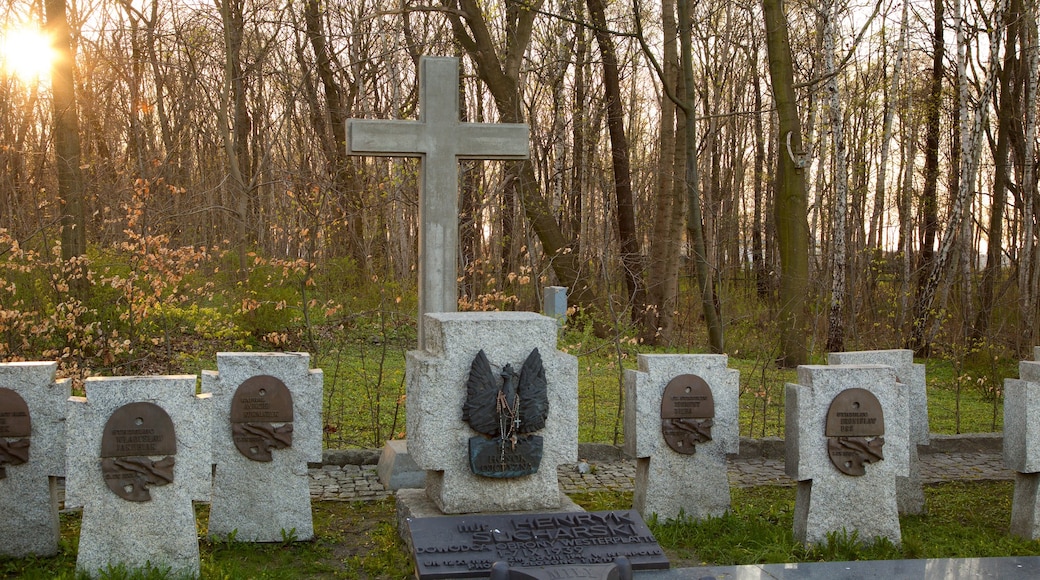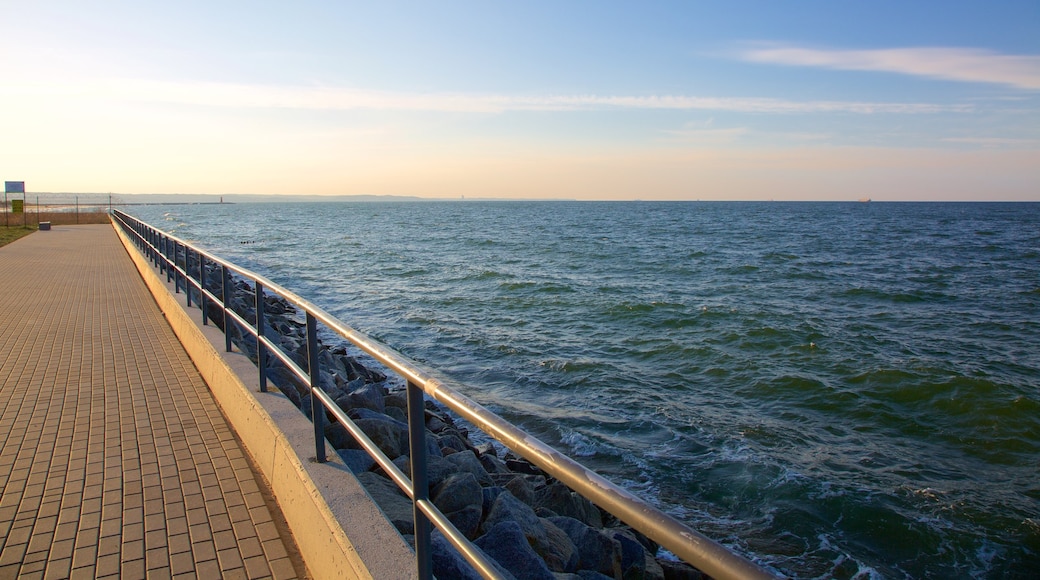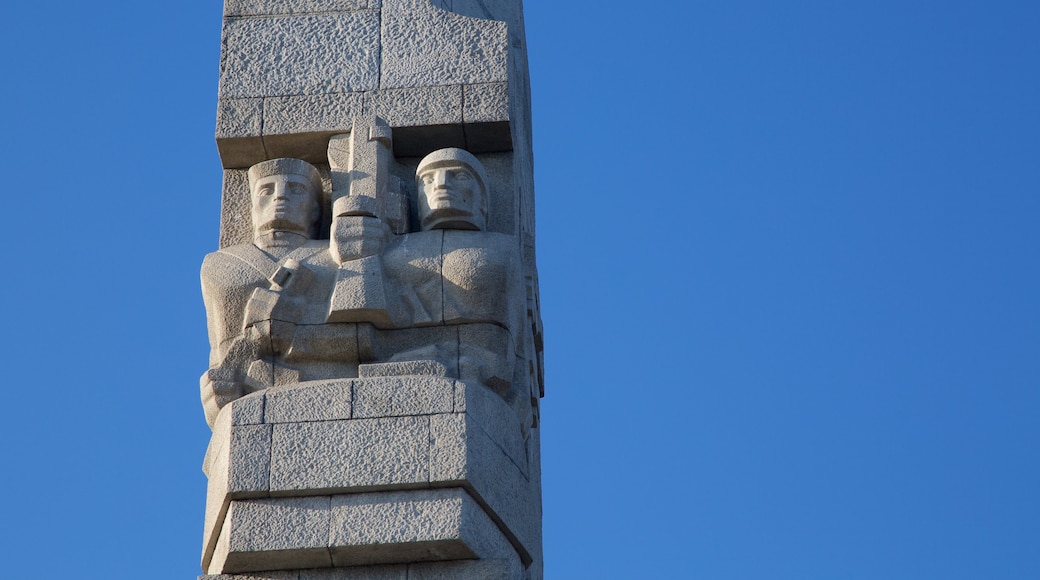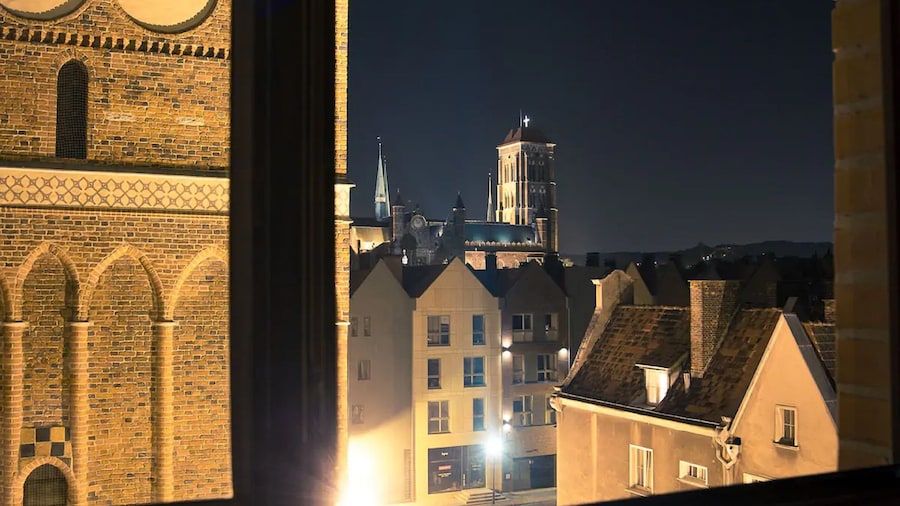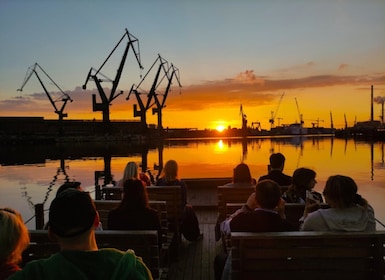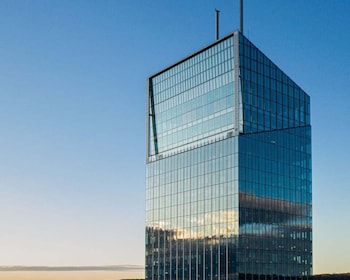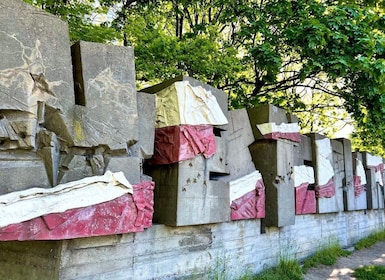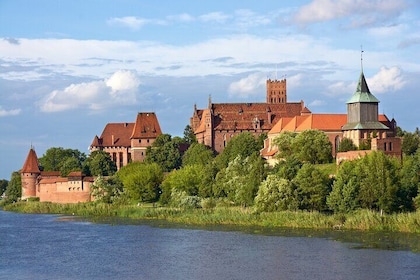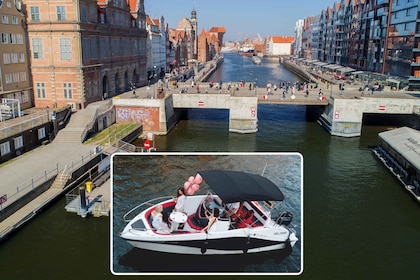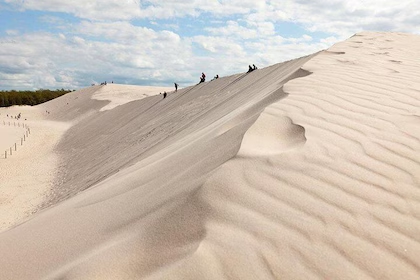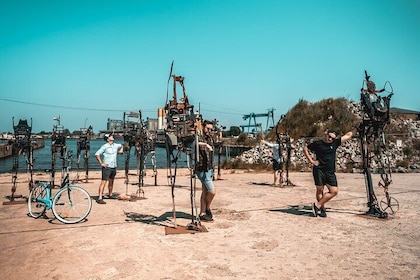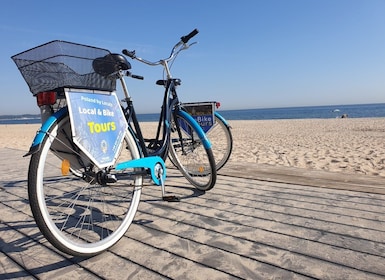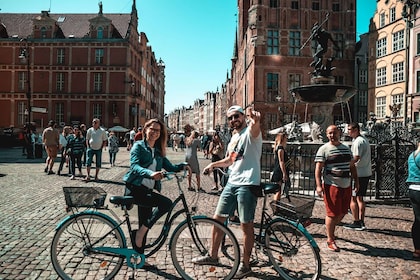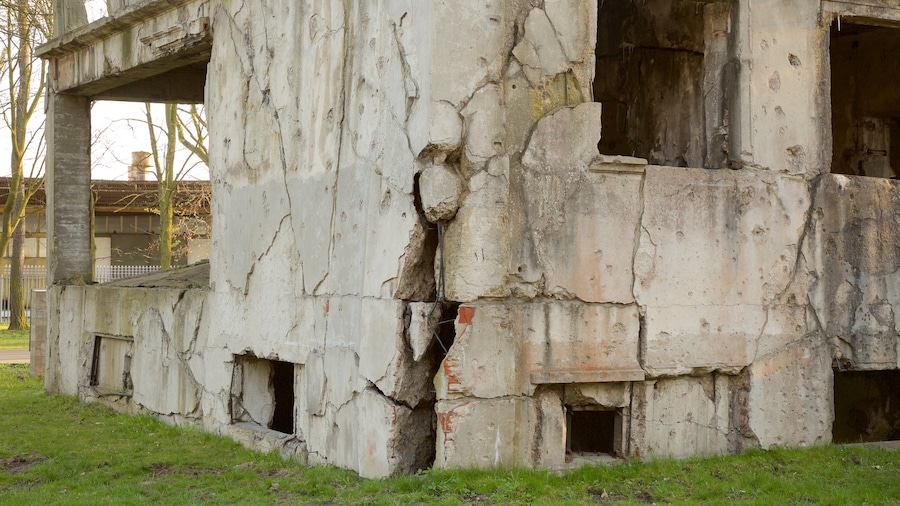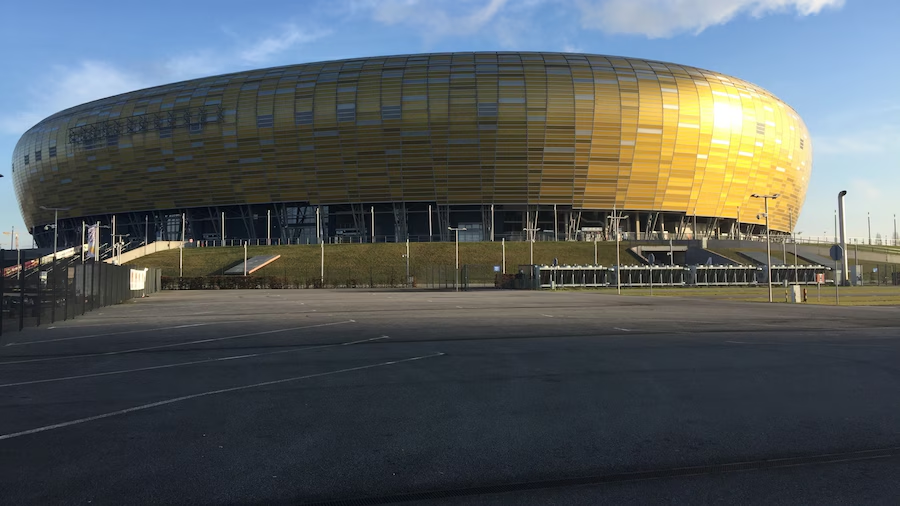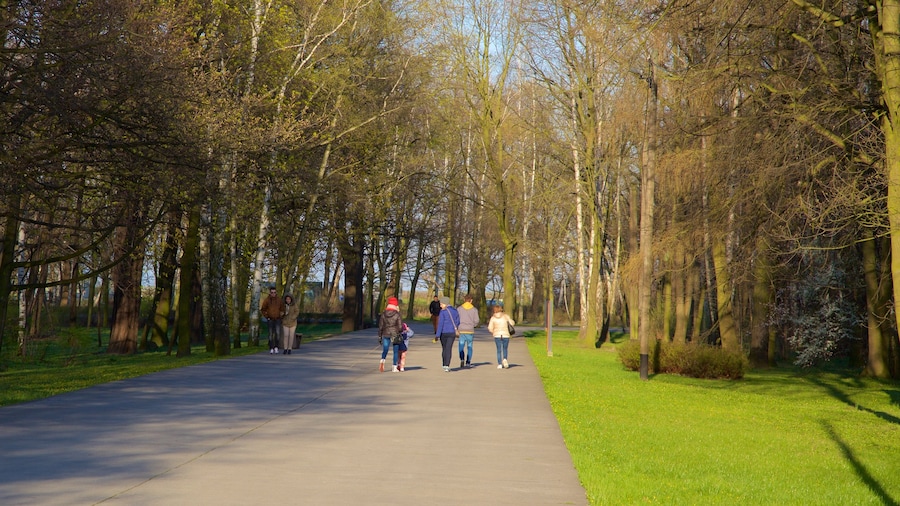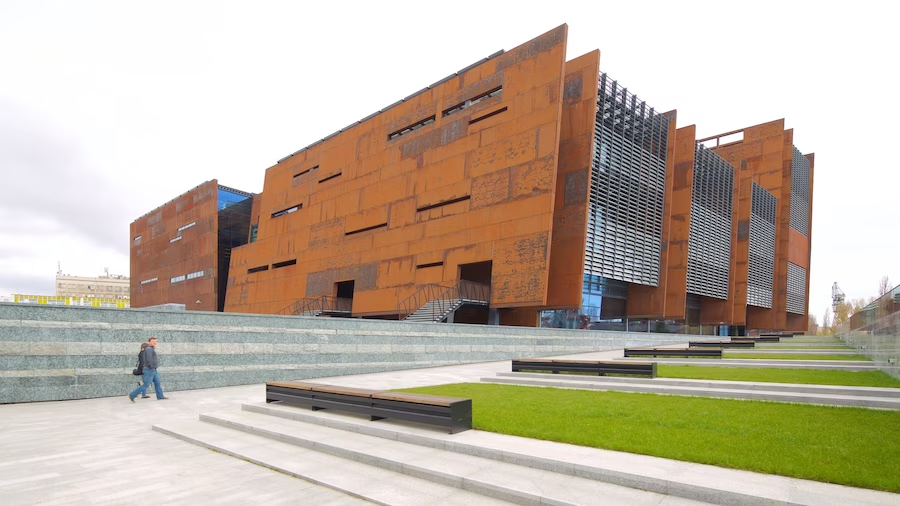This monument to Polish soldiers stands tall at the entrance to Gdańsk’s harbour and on the peninsula where World War II began.
Visit the Westerplatte Monument (also called the Monument to the Defenders of Westerplatte) for a poignant reminder of events that shaped World War II. This huge granite statue honors those who heroically defended Poland’s coastline during the 1939 attack by Adolf Hitler’s German troops. The Westerplatte Monument rises out of the Westerplatte peninsula. Here, the German invasion and eventual surrender by Polish forces signaled the start of WWII.
The monument is 82 feet (25 meters) tall and made up of 236 granite blocks. It is the work of a team of national designers, including architect Adam Haupt and sculptors Franciszek Duszeńko and Henry Kitowski. Note the series of embossed inscriptions and sculptures decorating the monument.
Stand on the steps and look toward the lighthouse across the river. Think back to the time when courageous soldiers stood waiting for the imminent bombardment from enemy battleships.
While here, explore the rest of the Westerplatte peninsula. Pathways wind around areas of tree-shaded and grassy parkland. See the remains of bomb-damaged barracks and gravestones. Find information signs that give details about the invasion and its effect on both the city and country.
On the eastern border is a sea-facing promenade. Sit on a bench or enjoy a relaxed walk while breathing the fresh Baltic Sea air.
Reach the monument by taking a public bus from Gdańsk’s city center. Alternatively, see the monument on one of the galleon ship tours departing from the city center waterfront. Between spring and fall, the ships cruise along the river and pass other major city sights such as the historic shipyards. Choose a round trip or disembark at the peninsula and schedule a later return time.
Westerplatte Monument is open year-round. Note that during the winter months the peninsula experiences cold temperatures and strong winds. On September 1 of every year the monument commemorates the war heroes with state ceremonies.
